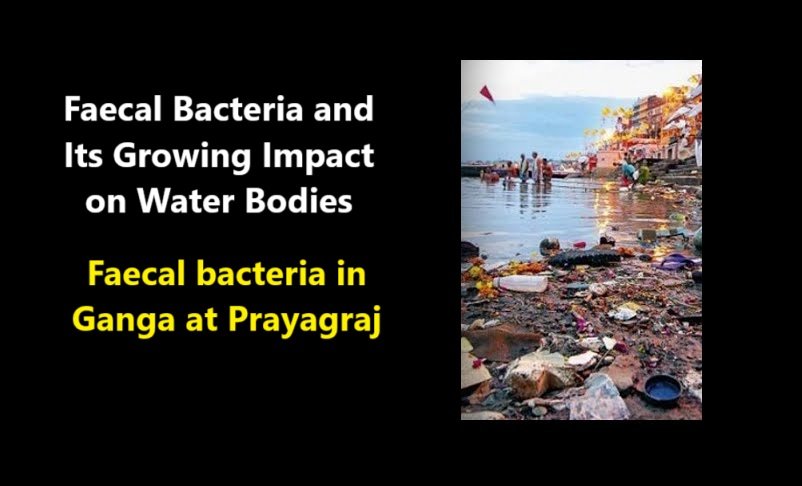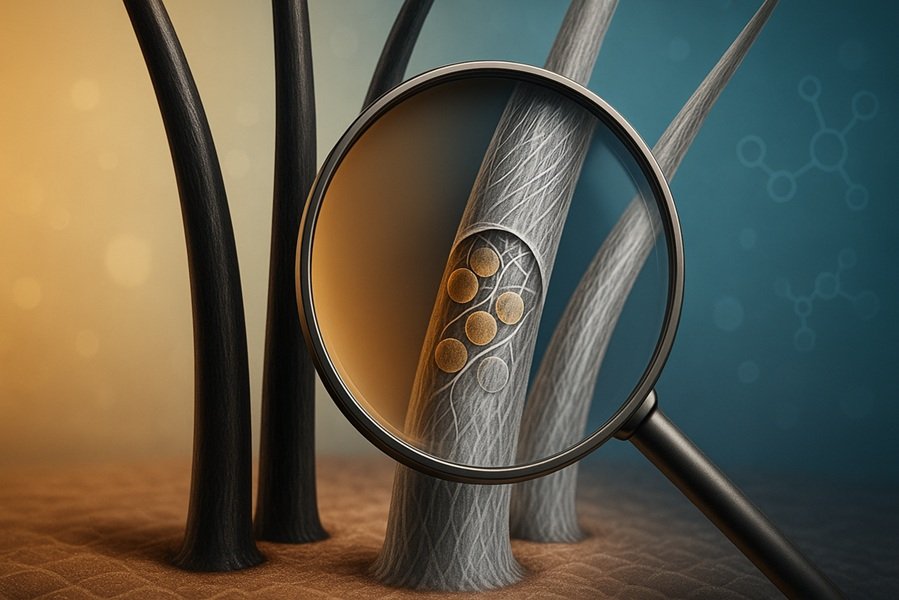
Introduction
Water is the essence of life, yet its quality is often compromised due to contamination by harmful microorganisms. One of the most concerning pollutants in water bodies today is faecal bacteria, a category of microbes that originate from human and animal waste. These bacteria are natural inhabitants of the intestines, but when they enter water sources, they signal potential contamination that can pose serious health risks.
Recent reports have raised alarms over high levels of faecal bacteria in India’s sacred rivers, the Ganga and Yamuna, particularly ahead of Maha Kumbh 2025 in Prayagraj. Millions of devotees are expected to take a dip in the rivers during the festival, making water quality a critical concern. Data from the Central Pollution Control Board (CPCB) and other agencies indicate severe contamination, suggesting an urgent need for intervention. This article provides an in-depth analysis of faecal bacteria, its impact on health, and the dire situation unfolding in India’s water bodies.
What Are Faecal Bacteria?
Faecal bacteria are microorganisms found in the intestines of warm-blooded animals, including humans. While many of these bacteria are harmless and play a vital role in digestion, some strains can cause diseases when ingested through contaminated water. The most commonly monitored faecal bacteria include:
- Escherichia coli (E. coli) – Some strains cause severe foodborne illnesses and urinary infections.
- Enterococci – Can lead to infections in wounds and the urinary tract.
- Faecal coliforms – A broader category that includes E. coli and indicates possible contamination by fecal matter.
The presence of these bacteria in rivers, lakes, and groundwater suggests contamination from sewage discharge, untreated industrial waste, or agricultural runoff.
Why Is Faecal Bacteria a Concern?
When faecal bacteria contaminate drinking or bathing water, they bring along a host of dangerous pathogens, including viruses, protozoa, and parasites. Exposure to such water can cause:
- Gastrointestinal illnesses – Diarrhea, vomiting, stomach cramps, and nausea.
- Hepatitis A and E – Caused by viruses that spread through faecal contamination.
- Typhoid and Cholera – Severe bacterial infections leading to dehydration and, in extreme cases, death.
- Skin and Eye Infections – Occur when bacteria-laden water comes in contact with open wounds or mucous membranes.
With millions of people expected to participate in Maha Kumbh 2025, where ritualistic bathing in the Ganga is a key tradition, the risk of a public health crisis looms large.
Faecal Bacteria in Indian Rivers: A Growing Concern
Reports from multiple environmental agencies indicate a massive spike in faecal contamination in India’s rivers, particularly in the Ganga and Yamuna. India Today reported that the CPCB has recorded alarming levels of faecal coliform in the Sangam area of Prayagraj, where the Ganga and Yamuna converge.
Contamination in the Yamuna
According to a report from The Telegraph India, the faecal coliform levels in the Yamuna reached 4.9 million MPN (Most Probable Number) per 100 milliliters, which is 1,960 times above the permissible limit set at 2,500 MPN/100 ml and 9,800 times the desired level of 500 MPN/100 ml. This data highlights the severe degradation of water quality in Delhi and downstream areas.
Contamination in the Ganga
Similarly, the CPCB’s data, cited by The Indian Express, revealed that faecal coliform levels at multiple inter-state boundaries of the Ganga ranged from 3 to 12 times the permissible limit. The worst-hit location was Khagra in Berhampore, West Bengal, where levels peaked at 30,000 MPN/100 ml, making the water highly unsafe for any form of human use.
What Is Causing This Crisis?
Several factors are responsible for the dangerously high levels of faecal contamination in these rivers:
- Uncontrolled Sewage Discharge – India lacks adequate sewage treatment infrastructure, and much of the waste from households and slums enters rivers untreated.
- Industrial Wastewater – Many factories along the Ganga and Yamuna release untreated chemical and organic waste, worsening contamination.
- Agricultural Runoff – The use of fertilizers, pesticides, and animal waste runoff contributes to bacterial growth in water bodies.
- Religious Rituals and Human Activities – Large gatherings, cremations, and disposal of human remains further introduce pathogens into river waters.
What Can Be Done?
Addressing this crisis requires urgent and multi-pronged action from government bodies, industries, and the general public.
1. Strengthening Sewage Treatment Plants (STPs)
The government has launched initiatives like Namami Gange, but many treatment plants either operate below capacity or are non-functional. Upgrading and ensuring efficient operation of STPs is crucial.
2. Strict Regulation of Industrial Waste Disposal
Industries dumping waste into rivers should face heavier penalties. Regular monitoring and enforcement of pollution control norms are essential.
3. Public Awareness and Behavioral Change
Citizens need to understand the impact of dumping waste into rivers. Campaigns should focus on sanitation, waste segregation, and responsible tourism.
4. Sustainable Agricultural Practices
Using organic fertilizers and reducing chemical runoff can prevent agricultural pollutants from entering water bodies.
5. Immediate Measures for Maha Kumbh 2025
With the festival nearing, the government should:
- Conduct daily water quality monitoring.
- Set up temporary sewage treatment units.
- Promote the use of designated bathing areas with cleaner water.
- Deploy awareness teams to educate pilgrims on hygiene practices.
Conclusion
The issue of faecal contamination in Indian rivers is not just an environmental problem but a serious public health hazard. With millions of people dependent on the Ganga and Yamuna for religious, domestic, and agricultural purposes, addressing this crisis is of utmost importance.
The high levels of faecal bacteria, as reported by CPCB, The Telegraph India, The Indian Express, and India Today, highlight the urgency for immediate action. Without timely intervention, events like Maha Kumbh 2025 could turn into hotbeds for disease outbreaks.
The need of the hour is collective responsibility—governments must act decisively, industries must comply with regulations, and individuals must adopt sustainable practices. Only through joint efforts can we restore the purity of our rivers and ensure safe water for future generations.
Let’s act now to preserve our rivers and protect public health.





